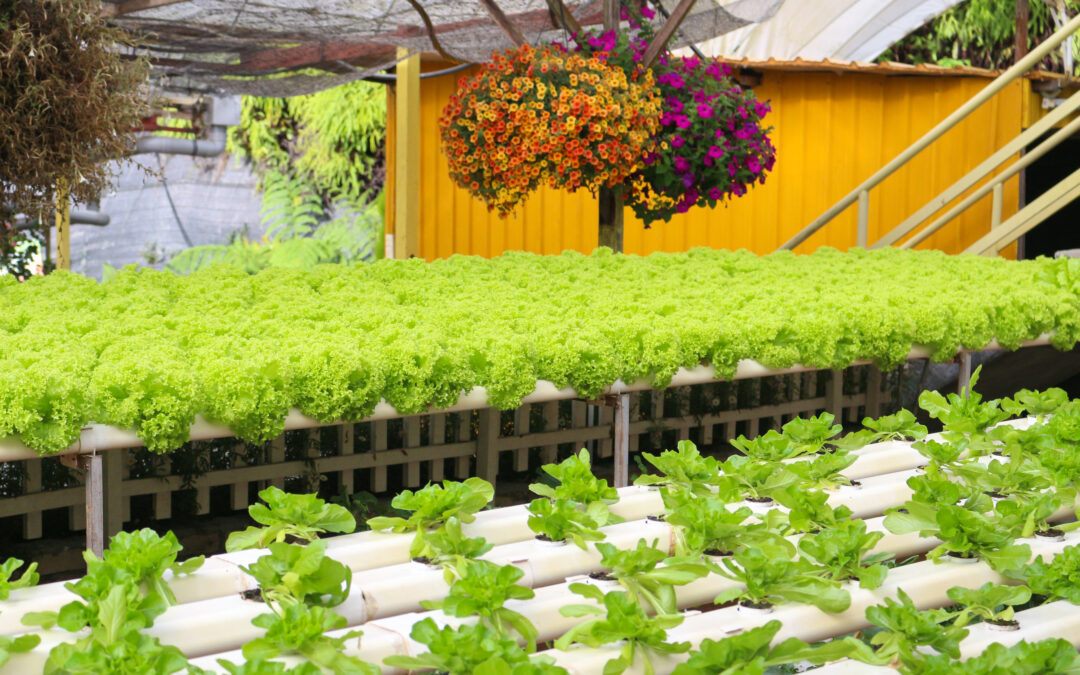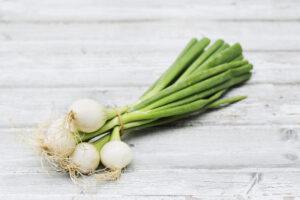==================
A Caveat and Affiliates
First off, a little caveat: within my articles you will find affiliate links, meaning if you buy them, I get a small commission. Your cost is not affected. In addition, I am an Amazon Associate and I earn from qualifying purchases on Amazon.
And yes, if I say that I recommend a product here, it means I truly believe it is a good product. I refuse to recommend any product that I have not researched and believe to be a good value.
Even better, I provide you with a very clear picture of the product, it’s use, and the probable value.
Earning your trust is important to me. I run this website myself and the commissions and donations help support the site.
Sound reasonable and fair enough? Let’s continue to the article.
==================
What You Can Grow with Hydroponics
A home hydroponics system is always a better option to grow your little greenies without messy soil. Yes, it sounds a little strange, but you can grow plants in water. Now you must be wondering which plant you should try. What can you grow with hydroponics? Well, almost any kind such as fruits, veggies, herbs, and even flowers. But today we are going to discuss a few plants which will be the best for this water-based system.

Hydroponics vegetable plant, healthy food concept
Hydroponics
Hydroponics is a gardening technique without soil. Nutrient-rich water medium is used to grow plants. In such a system, plants grow much better and faster because the nutrients are readily available. On the other hand, in the soil, plants cannot draw in nutrients directly. The nutrients must first be dissolved in water, and then the plants can absorb them. Moreover, many microbes in the soil can utilize the nutrients, ultimately causing a shortage of them for plants.
When a plant is growing in soil, its roots continuously keep looking for water and mineral nutrients. The plant utilizes most of these nutrients in the development of roots. But, in hydroponics, they are directly available to the plant, and it doesn’t have to put enormous energy into root growth. As a result, plants grow more efficiently and yield better than in the conventional gardening system.
Types of hydroponics:
-
Drip
-
Ebb & Flow
-
Aquaponic system
-
Water culture
-
Wick system
-
Nutrient film Technology
The following are crops perfectly suitable for a home-based hydroponic system:
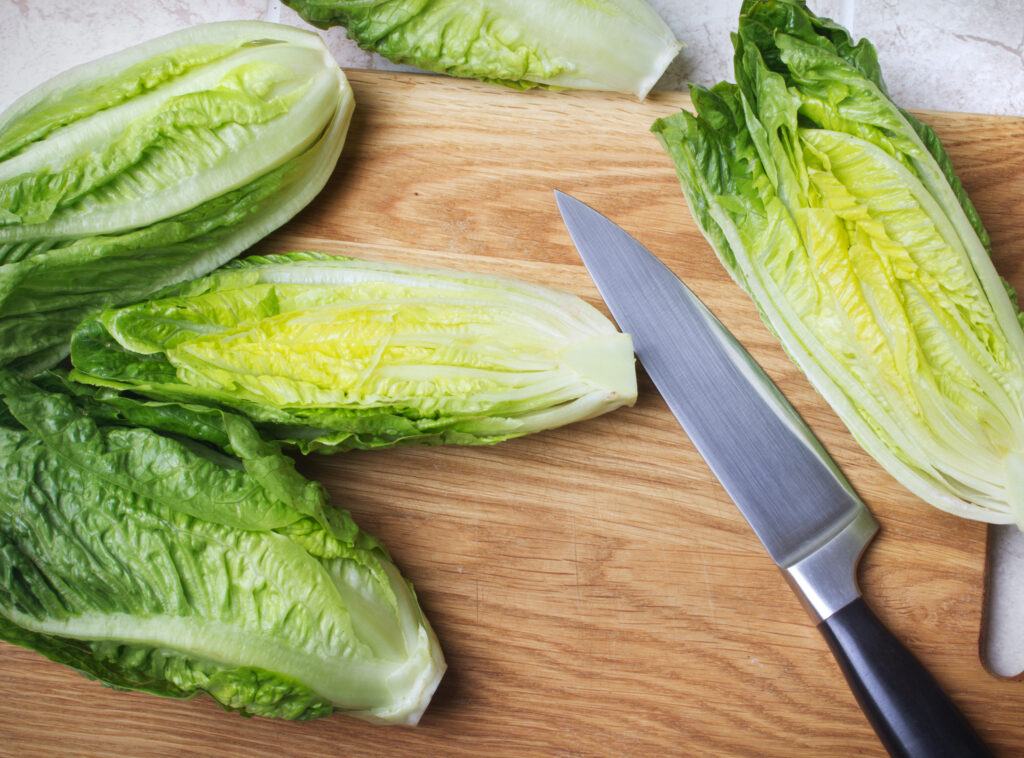
Romaine lettuce on kitchen board with knife
Lettuce
These crispy lush leaves will be a charming addition to your hydroponic system. Rapidly growing green leaves show incredible growth in water. A less demanding plant, lettuce is easy to care for. It requires minimal maintenance that it will grow perfectly in less than a month. Keep in moderate temperatures and neutral pH of around 7. The cut-and-come-again method is popular in lettuce harvesting. When the leaves are plucked off, they can regrow. Now you can have fresh salads without fretting about watering the pots regularly.

Fresh delicious strawberries
Strawberries
If you love strawberries, then you must be waiting for their growing season, desperately. Now, no more waiting for strawberries because you can grow and harvest them anytime you want. You can have your juicy fresh strawberries in just 8 weeks. These rosy-red berries are packed with vitamins, antioxidants, and fiber. Two hundred seeds embedded in the skin surround each strawberry fruit. But keep in mind, while growing in hydroponics, do not cultivate it with seed. Try seedlings ready to grow at the first step. Keep the pH 5.5 to 6 and the temperate a little warmer between 65-80 degrees Fahrenheit.
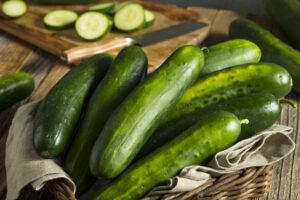
Raw Green Organic Cucumbers
Cucumbers
Cucumbers always crave moisture, nutrients, and warm temperatures. Those needs make them a perfect fit for the hydroponic system. So the yield is comparatively higher in water than in soil. And the plant develops extensive roots in the soil to search for more water and nutrient. However, in water, most of the energy is reserved and thus utilized in fruit production. As a result, better fruit size is achieved. Fruiting begins in 4 to 6 weeks. Once the plant starts yielding, you can have a continuous supply of cucumbers for up to four months.
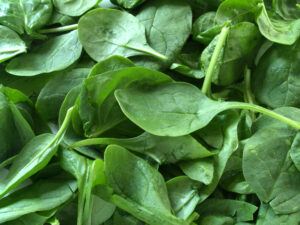
Fresh spinach leaves
Spinach
Water is a favorite place for leafy greens to thrive. Spinach in particular grows better in a hydroponic system. Those little transplanted seedlings will be ready to be served in your dishes in just 2-3 weeks. One can pick the leaves which are packed with iron and zinc. And you may cook them even when they are still small. But it is advised to harvest only the outer leaves to give some time for the inner small leaves to grow larger. To get a continuous supply throughout the year, maintain the temperature between 10-28 °C and remember its growth ceases below 10 °C.

Fresh tasty group of red large tomatoes
Tomatoes
Tomatoes are also an interesting option, but their light requirements are very high so make sure that they get plenty of light. If you are planning to have an indoor hydroponic system, you must purchase grow lights or LEDs in advance. Moreover, put some clay pebbles inside the water chamber to allow the tomato’s roots to have a firm grip on something. Traditional or cherry tomatoes both show incredible results in the water. You can grow them for personal as well as commercial use. Don’t forget to pollinate them for proper fruit setting when growing them for commercial purposes.

Green mint plants
Mints
They thrive extremely faster in water. And hydroponic systems are best for extensive root-growing plants. Mint roots grow at a rapid rate. Because there is no need to search for nutrients in the soil, no energy is wasted on root growth. This will not only provide you with fresh vegetables in your home but also lend an aesthetic look to your kitchen.

Dendrobium Orchid
Orchid
Who can resist the exotic, elegant, and captivating beauty of this wonderful flower? Thousands of species are available to embellish your homes or offices. Orchids are also excellent candidates for hydroponic systems. No doubt, they provide an aesthetic look to your bedroom’s corner or a display alcove in your living room. And growing an orchid in water will yield more of that orchid species. One of the major advantages is that the flowers bloom really quickly in water. Orchids are epiphytes, or air plants, that flourish atop branches of trees in the rainforests. They are not parasitic plants and get their nutrients and sustenance from the air and rain. All those characteristics make them ideal for the hydroponic system. Also, it grows amazingly in aeroponics and nutrients sprayed on the roots that grow in the air.
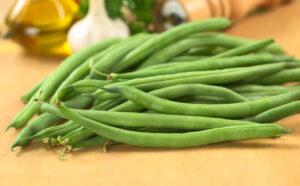
Fresh raw green beans
Beans
Green beans, also known as string beans, are harvested and eaten together with the pod that contains the beans. And they are consumed while the beans inside are still unripe. Before getting your beans into hydroponics, there are things to do first. That is, you germinate the green bean seeds first, which are larger compared to the seeds of other plants. Wait for a few days for the seeds to sprout. Then you can transfer the sprouts to your hydroponic garden. Monitor the water as green beans need a lot of water enhanced with nutrients. Since green bean plants are climbers or vines, let them grow on a trellis or any similar support that they need as they grow taller.

Red beets
Beet
The beet plants’ bulbs and leaves are edible. You can eat them raw, boiled, roasted, or steamed which makes beets versatile as food. That makes them healthful and nutritious. Both bulbs and leaves can be added to vegetable salads making them more healthful. Many varieties of beets can be harvested about two months after they were planted. The growing period may take 8 to 10 weeks in good weather conditions or favorable climates.
In a nutshell, that’s the traditional farming method of the beet plants. An alternative is using hydroponics to grow them. First, plant the seeds and wait for about 6 to 8 weeks for them to sprout or produce new growth. After that takes place, they germinate into seedlings or buds with two to three leaves. At this stage, they are taken to the hydroponic system which must be the ideal size to hold newly grown beets. Then the growing net of your hydroponics is infused with the growing medium. To ensure that moisture is retained, a mixture of perlite and vermiculate will enhance the retention of moisture.

Bell peppers in different stages of ripening
Bell Peppers
These vegetables come in many colors and varieties. Bell peppers need sunlight for about 14 to 16 hours every day. If grown indoors, use “grow lights” instead. But bell peppers are good to harvest past 50 to 80 days after seed sprouting. Then again, these colorful vegetables aren’t as difficult to grow in hydroponics as you’d think. It’s not the easiest way either, and you only need time to learn how to do it.
Bell peppers require lots of nutrients and water to bear fruits. And they need a lot of space. Their weight could somewhat be heavy that you need to beef up your hydroponic system’s structural design. Also, carry out the regular maintenance of your hydroponics as well as periodic water changes to maintain a balanced system.

Healthy green organic raw broccoli
Broccoli
A member of the cabbage family, broccoli is one of the veggies that’s considered a Super Food! Besides fiber and folate, it’s loaded with vitamins A, C, and K. Broccoli has green stalks that hold clusters of tiny florets that make it easy to identify.
As a superfood, it’s good to know that any type of broccoli can be grown by hydroponics. Varieties such as Arcadia, Blue Wind, Calabrese, Di Cicco, and Sun King are some of them. With hydroponics, broccolis grow in the right conditions that are cool, and with indirect lighting. To hydroponically propagate broccoli, one can start with its seed or clones. When harvested, new broccoli sprouts appear.
The typical hydroponics system set up for broccoli and other vegetables includes the reservoir or container, the nutrient pump, the mist nozzles, the timer, and water infused with the right nutrients.
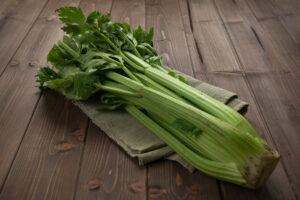
Shrub celery
Celery
It is another vegetable that many gardeners find quite difficult to grow outdoors because it takes a long time to mature. Celery is an herb that doesn’t grow in exceedingly cold conditions or extremely warm temperatures or climates. You grow them in cooler temperatures between 60°F to 70°F. And it takes about 140 days long for it to grow to maturity.
But with hydroponics, growing celery doesn’t have to take that long. And you are in charge of its growth. You have control over the climate conditions, the pests, and the diseases the plant is prone to. Compared with traditional gardening, with hydroponics, you can just pick out a few stalks for cooking a viand or for salad.
Two methods to cultivate celery are by growing celery you already have through propagation, or by seeds. Though it can take many days to propagate from seed, it is the recommended method if you require big quantities. The seeds could take as long as two weeks to germinate sometimes. And if you find soil or a growing medium difficult to use, switch to starter plugs. They make transplanting easier when the roots start growing.
So, it’s another vegetable candidate best grown hydroponically. It may be a long wait for avid gardeners to raise them traditionally, that’s a little more than 4 months. With hydroponics, you get to harvest more if you’re in the vegetable production business and have more than enough left for household consumption.

Bunch of fresh Swiss chard
Chard
Growing fruits and vegetables by hydroponics gives the advantage of using only about 10% of what would be required for those grown in fields. Additionally, water is conserved because the run-off water from watering the hydroponic plants is caught and brought back to the system.
Swiss chards have become a hydroponics favorite because it’s among the hydroponic plants that are easy and exciting to grow. And after about 35 days in hydroponics, Swiss chards can already be harvested. Another good thing about hydroponics is in the area of water-saving technologies. Water doesn’t get leached into the soil and wasted. Traditional crop growing like soil farming uses up a huge amount of water, and a part of it is wasted.
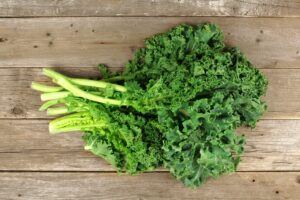
Bunch of fresh kale
Kale
Another superfood that health-conscious aficionados should have on their food plate is kale. One of the advantages of growing your preferred fruits and vegetables hydroponically, such as kale, is that you completely know how it’s grown. Because you get to do it yourself. And you can harvest kale fully grown. Or gather a lot of it early to enjoy microgreens as well.
For a dyed-in-the-wool gardener, this could also be a hobby that pays dividends because of its health benefits. And growing vegetables and fruits need not take long to be eaten unlike raising them in the traditional method. Gathering baby or microgreen kale plants could be done in a few weeks and at least 3 months for ripe kale plants.
Kale plants hydroponically grown need a growth medium with a pH of around 5.5 and 6.5. To avoid burning the plant with an overdose of nitrogen, feed your kale with a nutrient solution developed precisely for kale and other cruciferous vegetables.

Fresh green peas and pods
Peas
A hydroponics setup may be started by building your own using PVC, wood materials, and other items, like a DIY project. Or you can aim for the more expensive, state-of-the-art hydroponic system that can be installed for you.
First off, germinate the seeds using this straightforward, easy-to-follow technique. In a sealable container, line the bottom with a paper towel, and spray it with water to wet it. Then position the green pea seeds on the damp paper towel about an inch apart. Now put the transparent lid on the container and place it under a grow light or on a sunny window ledge. Within 3 to 5 days check to see if the seeds germinate.
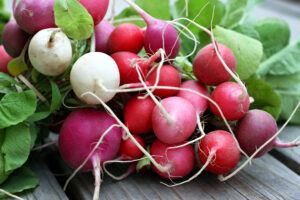
Bunch of radishes in red, pink, and white.
Radishes
They might just be the kind of vegetable that should win hands down when it comes to voting for the most versatile in growing. Radishes can be grown in containers, raised beds, conventional gardening, and in a hydroponic system.
Other than being one of the easiest to raise from seed and having minimal nutrition needs, radishes occupy little space that’s suitable for hydroponic growing. The seeds germinate quickly and successfully with a germination rate of 80%. And you can harvest them earlier compared with other types of vegetables because they ripen faster.
Spring Onions
They are tender and young onion bulbs that are harvested before they become mature. Spring onions become your regular onions when allowed to mature. Also known as scallions, they’re usually added as ingredients in many kinds of dishes. They earned their name from the traditional practice of being planted as seedlings in late fall and harvested the following spring.
Now, for raising spring onions by hydroponics, the ideal propagating materials are the spring onion seeds. Though you can start in a hydroponics setup, most aquaponic growers plant the seedlings or bulbs initially on soil a much better way to start. When they sprout, they are harvested and cleansed to get rid of dirt and debris. Then, they are transferred to the hydroponic system.
Once in that setup, the spring onion seeds will germinate in about two and a half weeks. If planted directly on the ground, it takes about five weeks. After planting the seeds, wait for about four months to gather the ripe celery stalks.
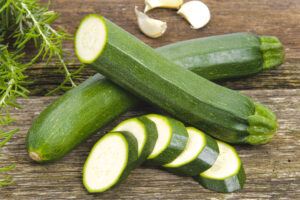
Zucchini vegetables
Zucchini
Maybe you’ve experienced raising zucchini outdoors in your vegetable garden. Then you have to deal with cucumber beetles and squash bugs infestation. But that won’t be a problem when growing them indoors with grow lights and using hydroponics technology. The seeds germinate in 1 to 2 weeks and grow into plants for around two months and then they can be harvested.
Hydroponically grown zucchinis grow abundantly. So you can enjoy a huge harvest in just a short time. Having the expertise in hydroponics and the required equipment, hydroponically growing zucchinis would be a breeze. Somewhat a big plant, it requires a durable container for hydroponics that is constructed well and supported adequately.
All n all, raising food plants hydroponically gives many benefits. You get to produce large amounts of fruits and vegetables in limited areas. Plus, you have control over many of the variables and parameters. Pests and diseases become nonexistent when growing zucchinis and other vegetables using hydroponics.
Benefits:
- This system ensures the conservation of land, soil, and water.
- In a hydroponics system, you use less water as compared to a flooded field.
- The crops will grow in controlled environmental conditions.
- One can easily provide accurate pH to the roots of the crop to thrive.
- Fewer chances of diseases, no weed growth or insect attack
- The plants will not face any environmental stressors, for example, abrupt climate changes, and temperature extremes.
Tips for better growth
Hydroponics is a one-time investment with long-term benefits if handled properly. Pay close attention to temperature, pH, and water quality. It requires more time and attention to install the system. And you need to acquire expertise in handling the different types of equipment. Also, practice creating a perfect mixture of fertilizers or nutrients. While transplanting the seedlings, clean the roots properly. Keep an eye on any diseased plant and quickly remove any infected or sick ones. Moreover, it is better to avoid deep-rooted, more heightened, and vining plants.
Takeaway
Learning about hydroponics and other new technologies to grow food plants have many benefits. So you can grow them faster, better, and in more quantities vegetables, fruits, berries, and nuts among others. It answers the query of what can you grow with hydroponics. We get more choices and ways of growing them and reap the healthful benefits. Sticking to one kind may not be enough. But having more varieties ensures that we benefit the most. Wouldn’t it be nice to have all those options for enjoying our food? They open the doors to more healthful food choices and make feeding ourselves well-rounded.
READ MORE:
